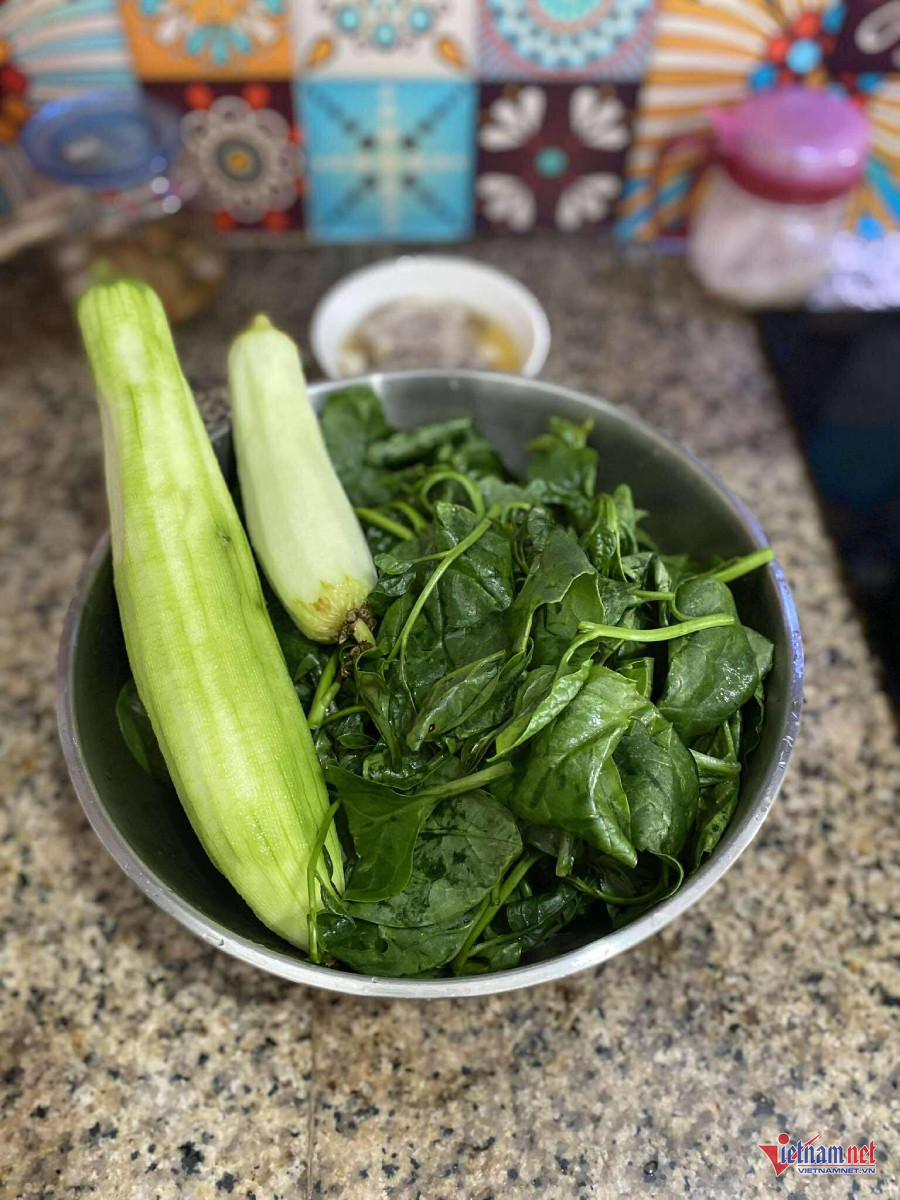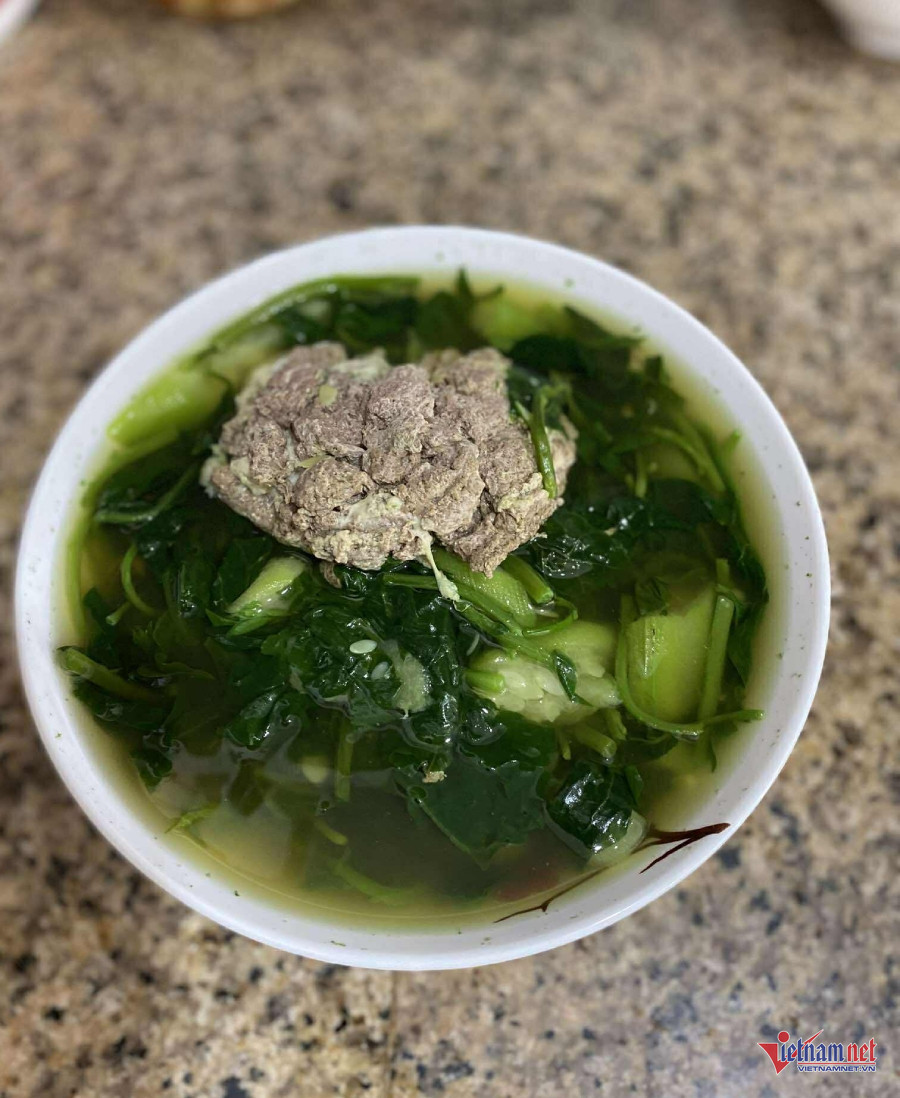In the fields and along the canal banks of northern Vietnam, a seasonal delicacy is making its appearance. Known as the cay, this crustacean may have a strong odor, but when cooked properly - especially in soup - it becomes an irresistibly sweet and savory treat.
This small, crab-like creature lives in burrows along paddy field edges and canals. Although thinner than a crab, its pincers are sharp and pointed. Popular in the rural lowlands of northern Vietnam, cay are hunted by locals and cherished for their distinctive flavor. Once you've tasted it, it’s hard to forget.
Flashlight hunting: Two kilograms in one hour
 |
 |
Cay live in holes along canal banks and rice fields. Despite their unpleasant smell, when prepared correctly - particularly in soup - their flavor surprises and delights.
Thanh Huyen, 42, from An Lao, Hai Phong, shared that she has enjoyed cay since childhood.
"As a girl, I often went cay fishing with my mother. During summer break, even under the scorching sun, I’d wear a hat and head out to the canal or rice field to catch cay. My childhood was filled with memories of catching cay and shrimp. It’s not easy and requires technique.
We used a bamboo fishing rod with a string tied to one end and bait, usually snail guts, attached. Catching cay is an art. The angler must move quietly, or the cay will retreat into its burrow.
We’d stand at a distance, lower the bait near the hole, and wait for the cay to bite. Once it did, we’d lift it quickly and drop it into a basket worn at the hip," she recalled.
Catching cay requires finesse. If mishandled, their pinch can be painful and draw blood.
 |
 |
During the rice harvest, cay proliferate in the fields. Seasoned farmers know how to trap them by digging holes in the center of the field and cutting the surrounding rice to drive the cay into the pit. After harvesting, they simply scoop them up for cooking.
“In the old days, after each harvest, my mother would catch whole baskets full of cay. My siblings and I loved cay soup cooked with jute and Malabar spinach, served with pickled eggplant. That flavor stays with me even now,” Huyen said.
Though she now works in a factory, Huyen still catches cay whenever she has time. After work, she heads out to the pond with a flashlight.
“We have a large pond. At night, I just need one hour with a flashlight to catch around 2 kg. It’s especially fruitful after rain because that’s when cay come out,” she shared.
According to her, cay hunting isn’t difficult, just requires patience and quick reflexes. When half of its body emerges from the hole, a well-aimed beam of light stuns it long enough to grab. Rainy nights yield particularly abundant catches.
“It’s not enough to sell, but more than enough for a meal. Just one night of hunting gives me enough for a refreshing pot of cay soup for the family,” she said.
A cooling summer dish
 |
 |

In Huyen’s hometown, cay sells for about $4 per kilogram. Though cheaper than field crab or high-end seafood, cay soup and fermented cay paste offer a flavor that’s hard to rival.
In Hai Phong, Thai Binh, and other northern provinces, cay is a staple summer dish. After being caught, they’re washed, shelled, ground or blended, then strained to collect the juice - cooked much like field crab soup.
As the broth simmers, the cay meat rises to the top in creamy flakes. Greens like Malabar spinach, jute leaves, or water mimosa are added, producing a fragrant, flavorful soup.
“Cay soup is cooling and perfect for summer. The rich sweetness of the broth blends beautifully with green vegetables and white rice. Before you know it, the pot is empty,” Huyen said.
Besides soup, fermented cay paste is a beloved condiment. After a meticulous fermentation process, the resulting liquid is bottled and sealed with banana leaves to sun dry. The more sun it gets, the richer and more aromatic it becomes.
Fermented cay paste is perfect with boiled vegetables, pickled eggplant, or bún đậu (tofu and noodle platter).
Though humble, cay dishes are steeped in nostalgia. For many, it’s a childhood memory and a symbol of home during summer. Even after moving to the city, the taste of fermented cay remains unforgettable.
It’s a treasured gift, lovingly packed by parents for their children each time they return home.
Tu Linh